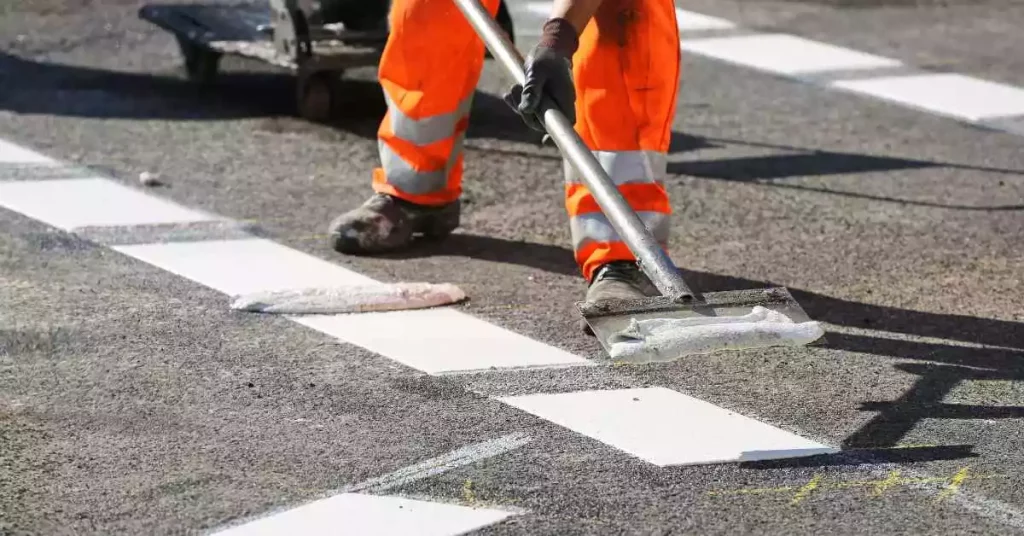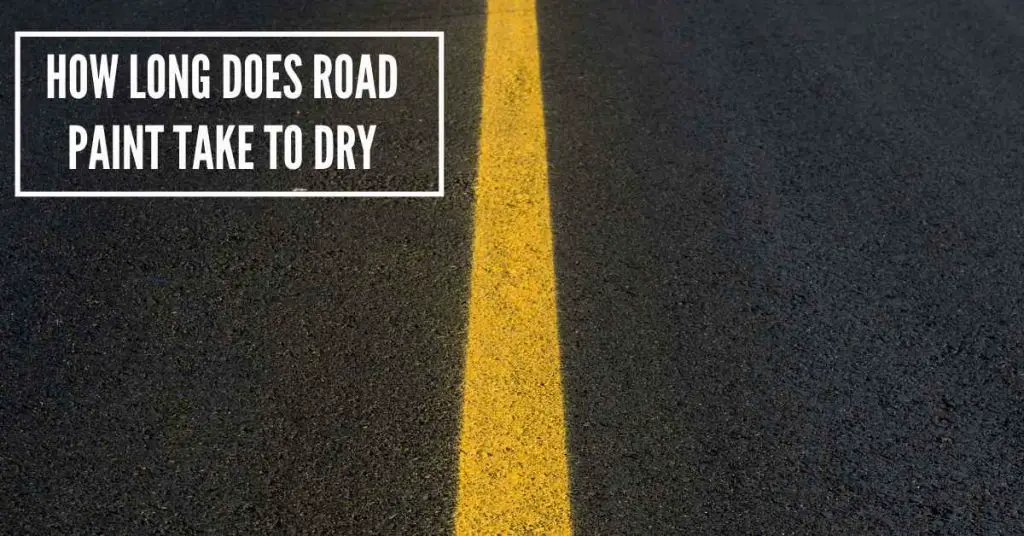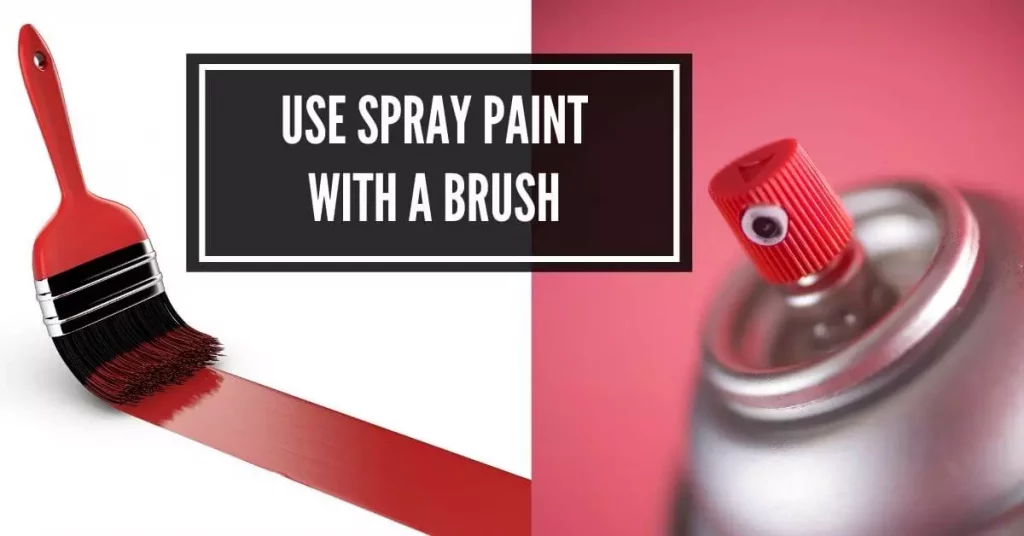If you’ve ever driven on newly painted roads or highways, you may have noticed that the paint appears wet or sticky. It’s a common misconception that the paint doesn’t dry, but it’s actually quite the opposite. In this article, I will explore the factors that influence the drying time of road paint and answer the question, “How long does road paint take to dry?”
Table of Contents
Types of Road Paint
Road paint, also known as traffic paint, marks roadways, parking lots, and other surfaces for traffic control purposes. It’s a highly reflective and durable paint that helps drivers navigate the roads safely.
There are two main types of road paint: water-based and solvent-based. Water-based paints are made of water and acrylic or latex resins, while solvent-based paints are made of solvents and resins.
Water-based paints are the most commonly used type of road paint because they are safer for the environment and for the people who apply them. Solvent-based paints are typically used in areas where there is heavy traffic or where the weather is particularly harsh.
How Long Does Road Marking Paint Take to Dry?
How long to wait before driving on newly painted roads? After applying road paint, giving it enough time to dry before allowing traffic to move over it is essential. The recommended drying time for water-based road paint is at least one hour, while the recommended drying time for solvent-based paint is at least four hours.
However, it’s important to note that these are only recommendations. The actual drying time for road paint can vary based on several factors, including the weather conditions and the thickness of the paint. Sometimes, waiting longer than the recommended drying time may be necessary.
Tips for Accelerating Drying Time
If you’re looking to accelerate the drying time of road paint, here are some tips that can help:
a) Increase Temperature
Higher temperatures can accelerate drying time. Try to paint during the warmer months or use heat lamps to speed up the drying process.
b) Decrease Humidity
Lower humidity levels can also speed up drying time. If you’re painting during a humid day, consider using a dehumidifier or waiting for a less humid day.
c) Apply Thin Layers
As mentioned earlier, thinner layers of paint will dry faster. Apply multiple thin layers instead of one thick layer.
d) Use a Fan
Using a fan to circulate air can help dry the paint faster. Ensure that the fan is not too close to the painted surface, which can cause the paint to dry unevenly.
e) Application Method

The method used to apply the paint can affect drying time. For instance, spraying paint can result in a thinner layer that dries faster, while using a brush or roller can result in a thicker layer that takes longer to dry. Also, using a marking paint wand with spray paint cans help you get a smooth finish and allows the paint to dry quickly.
FAQ’s
Is It Safe to Drive on Freshly Painted Roads?
Yes, it’s safe to drive on freshly painted roads. But going on newly painted roads is not recommended if the paint is still wet as it can damage the paint.
How Long Should I Wait Before Walking on Freshly Painted Road Surfaces?
It’s best to wait at least 2-4 hours before walking on freshly painted road surfaces.
Can I Paint Roads During Rainy Weather?
No, it’s not recommended to paint roads during rainy weather, as the rain can cause the paint to run or wash away.
Is It Necessary to Apply A Second Coat of Paint?
It’s not always necessary to apply a second coat of paint, but it can help improve the durability and visibility of the paint.
How Can I Tell If the Road Paint Is Dry?
The best way to tell if road paint is dry is to touch the surface with your finger gently. If the paint feels dry and does not come off on your finger, it is safe to drive on.
What Happens If It Rains Before the Paint is Dry?
If it rains before the paint is dry, it can become damaged and need to be repainted. Additionally, wet weather can cause the paint to take longer to dry, so it’s important to wait even longer before driving on freshly painted roads if it has rained recently.
Conclusion
Understanding how long road paint takes to dry is essential for effective road maintenance and safety. Factors such as weather conditions, paint type, application thickness, and surface preparation significantly influence drying time.
By following guidelines and considering these factors, road authorities can minimize disruption and ensure the longevity and visibility of road markings. Remember to choose the appropriate paint type, monitor weather conditions, and follow manufacturer instructions for efficient road paint drying.

Even though I have 10+ years of experience in the painting business, I am always trying to learn the latest coloring methods. I have been into colors since my teenage days. I spent a lot of time experimenting with new painting methods on multiple surfaces. Now, I want to spread my knowledge through my blogs and articles.







